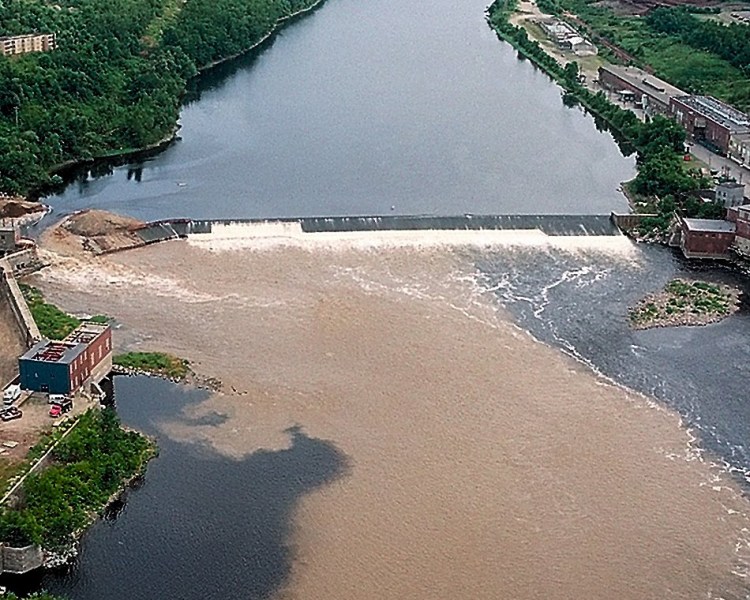Twenty years ago this month, an excavator knocked out the Edwards Dam, opening up part of the Kennebec River for the first time in 162 years — and signaling that a new era had arrived.
The Edwards Dam was built in 1837. It first provided mechanical power for saw mills and a grist mill on the nearby shore, then beginning in 1882 for the Edwards Manufacturing Co. textile mill. Electricity came in 1913 and was used by the company until the early 1980s, when the mill closed and an electricity contract signed with Central Maine Power.
The license to operate the dam, by then jointly held by Edwards Manufacturing and the city of Augusta, expired in 1993 at a time when many Mainers were rethinking the relationship between the state’s rivers and its economy.
Rivers had always been utilitarian. That’s why people settled along them; to use them for power, food and transportation.
As industrialization rose, the rivers were used not only for power and to transport all manner of goods and material, but as dumping grounds. Industrial and farm waste, and human refuse were problems to be sent downstream.
As a result, many rivers became unfit for recreational use — or even as a backdrop for a nice weekend lunch. Smelly, dirty rivers were nothing to build a town around, so buildings faced the other way — communities literally turned their backs on the river.
Dams also prevented the free movement of fish, cutting back on habitat and upsetting the river’s ecosystem.
By the time the license for the Edwards Dam came up for renewal, however, people were beginning to think of rivers differently — not as industrial assets, but as recreational assets. The life had been choked out of many rivers, but it could be returned, they said, and communities would benefit.
Ultimately, the Edwards Dam would become the first dam removed under a new federal policy that placed ecological concerns alongside industrial ones. For the first time, the Federal Energy Regulatory Commission ruled that the environment gains from removing a dam outweighed the benefits from the electricity it produced.
The agency has been proved right. In the two decades since the dam’s removal, the Kennebec River has become healthier by the day, welcoming back long-absent fish species, then the wildlife that live off them. The return of a healthy fishery was further boosted by the removal of Fort Halifax Dam on the Sebasticook River in Winslow, one of the Kennebec’s tributaries.
There are now large runs of river herring and American shad. Dozens of bald eagles fly overhead. All of it draws people to the shores of the Kennebec.
Others have noticed. There have been nearly 1,200 other dams removed in the United States since the Edwards was breached, including the Great Works and Veazie dams on the Penobscot, which has also come back to life. Ninety-nine dams were removed last year alone; the benefits are just too clear now.
“Communities are inspired by what has happened in Maine,” Amy Kobar, national communications director at American Rivers, a national advocacy group, told the Kennebec Journal last week.
Rivers have always been the lifeblood of the communities on them. That will continue, just in a different way, as the communities reorient themselves — as Augusta has — to the rivers that run through them, creating waterfront experiences that invigorate residents and draw visitors.
Unlike before, people now want rivers to be visible. It’s something the people who fought for dam removal saw coming, and from which the state now stands to benefit. Maine won’t soon again turn its back on its rivers.
Copy the Story Link
Send questions/comments to the editors.



Success. Please wait for the page to reload. If the page does not reload within 5 seconds, please refresh the page.
Enter your email and password to access comments.
Hi, to comment on stories you must . This profile is in addition to your subscription and website login.
Already have a commenting profile? .
Invalid username/password.
Please check your email to confirm and complete your registration.
Only subscribers are eligible to post comments. Please subscribe or login first for digital access. Here’s why.
Use the form below to reset your password. When you've submitted your account email, we will send an email with a reset code.